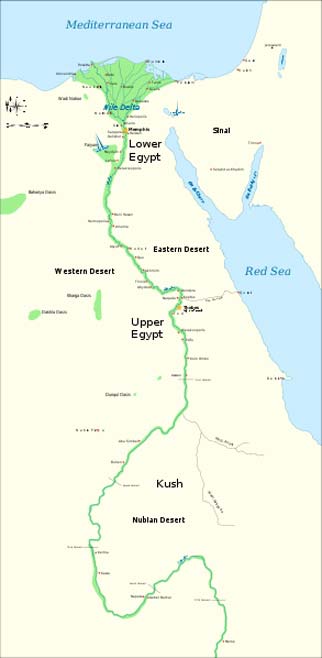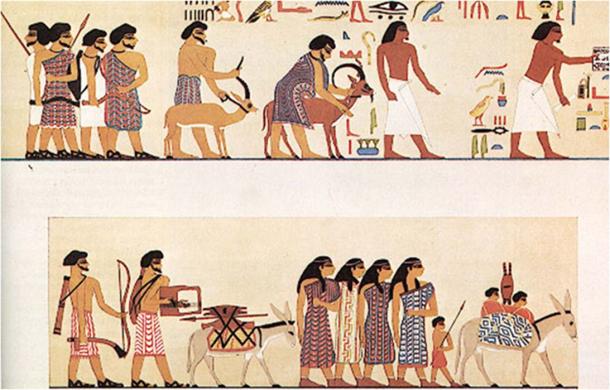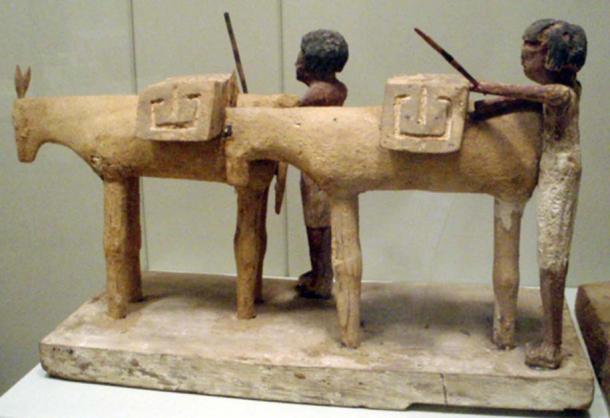The ancient Egyptians created a sophisticated economic system thousands of years ago. Although they may seem far removed from modern life, their inventions in the monetary realm provided the basis for many economic practices still in use today. If you think your taxes are bad, take a look at what your obligations would have been in the past!
The economy was well-developed and supported by special bureaucracy in the kingdom of the pharaohs. The legal system was headed by the pharaoh and supported by compliant nobles and officials. The ruler created every law. Some of the ancient Egyptian innovations changed the economic world forever. Although the economy wasn’t as complicated then as it is now, there are many practices that continue to be relevant/used in today’s world.
Making Money in Ancient Egypt
Current Prices on popular forms of Gold Bullion
Most of ancient Egypt’s income was based on agriculture, but trade also had an important role in the budget. Egypt had a unique place on the map of the ancient world. The Nile River allowed them to trade goods all over the country via ships. Moreover, since the ancient Egyptians often had enough food to feed their people, they also sold many goods abroad.

Map showing the Nile river. (CC BY 3.0)
Since at least the reign of the 3rd Dynasty, mining expeditions were sent to places like Sinai to excavate goods such as alabaster, quartzite, and copper. Egypt had trade contacts with their near neighbors, but growing evidence also suggests that they may have traveled as far as northern Europe. Although it is likely that didn’t take place very often, it is certainly possible they made trade connections to those distances.

The Egyptian colony stationed in southern Canaan was also a very important element in the Egyptian trade route. The pottery produced there was popular in the Mediterranean area. Egyptians exported papyrus, linen, grain, gold, glass, and stone artwork. However, trade was an expensive practice, especially when they imported items like beloved lapis lazuli stones for the pharaohs from the area of modern Afghanistan and olive oil from Greece and Crete.
Payment Practices
The ancient Egyptians didn’t use paper money or coins right away. However, their payment system was well thought out. The labor market was based on hiring people and paying them with food, oil, drinks and other goods. For trade, they preferred to just exchange items. They also paid each other with animals, like sheep.

Ancient Egyptian tomb figurines depicting workers loading up a couple of donkeys with supplies. Early the Middle Kingdom, circa 2000 BC. (Keith Schengili-Roberts/CC BY-SA 3.0)
With time, they started to use pieces of gold as money. This is a huge difference between Egypt and Mesopotamia – where the alternative to paper money was silver rings. In Egypt, silver was probably even more expensive than gold. Evidence supporting this idea comes from a New Kingdom Period wall painting depicting a man weighing big gold rings which were discovered in Thebes.
Researchers have discovered that all metal pieces, including gold and silver, were carried in jars or sacks in ancient Egypt. To make trade between Palestine, Egypt, and Mesopotamia easier they created a system that could have been based on the traditional Egyptian measurement known as deben (equal to three ounces). To give you an idea of how this worked, it was possible to buy a sack of wheat for one deben and the cost of a cow was about fifty debens.




